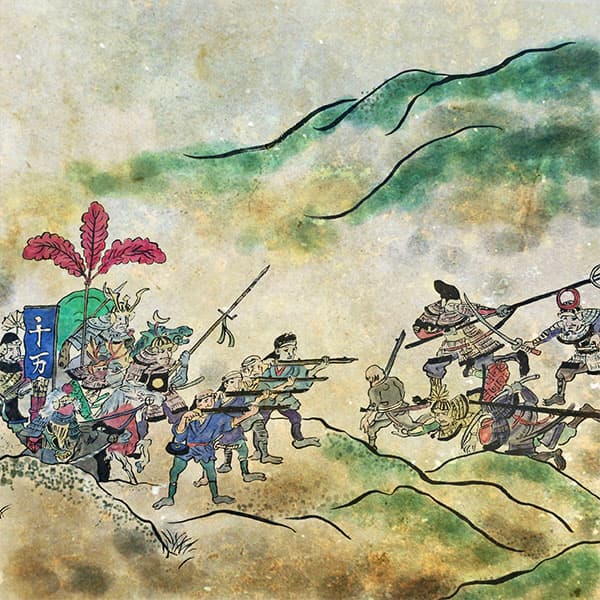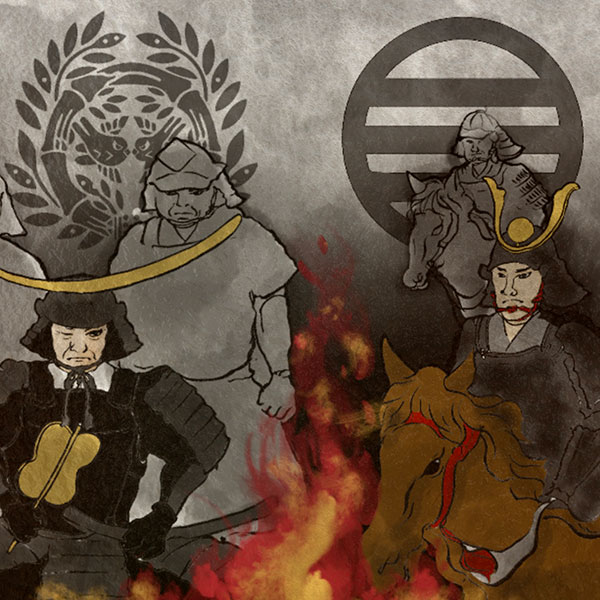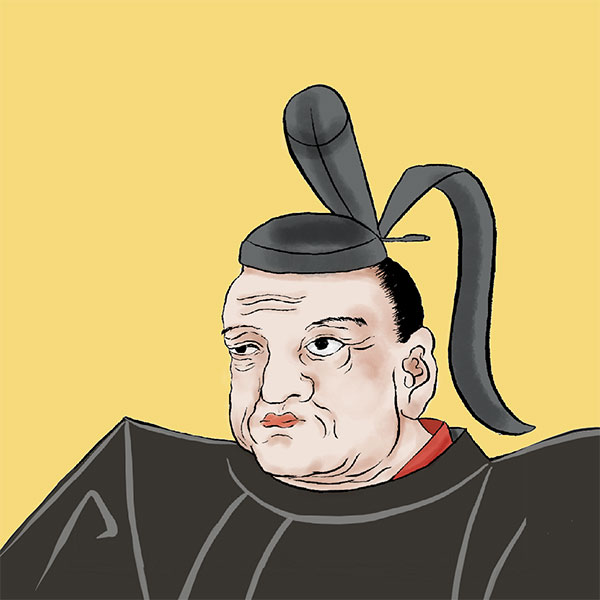- Yonezawa domainRuled by the Date and Uesugi clans.
- The Yonezawa domain is the most well-known domain in Tohoku, and was ruled by feudal lords who often appear in historical dramas, such as the Date clan and the Uesugi clan. During the Edo period, it was not uncommon for the feudal lord to rule a domain to change every few years, but the Yonezawa domain was consistently ruled by the Uesugi clan.

Yonezawa CastleYonezawa City, Yamagata Prefecture
- spring
- summer
- autumn
- winter
- TOP
- Tohoku
- Yamagata Prefecture
- Yonezawa Castle
| Other name | Maizuru Castle, Matsugamisaki Castle |
|---|---|
| castle construction | 1238 |
| address | 1-4 Marunouchi, Yonezawa City, Yamagata Prefecture |
Yonezawa Castle is the domain office of the Uesugi clan of the Yonezawa domain, and Ninomaru is the domain office of the Yonezawa Nitta domain.
- Access to Yonezawa Castle
- From Yonezawa Station on the JR Yamagata Shinkansen/Ou Main Line, take the Yonezawa Citizen Bus "Yonezawa (Matsubara) Sekine Line" and get off at the "Uesugi Jinja-mae" bus stop.
HISTORYYonezawa Castle, the birthplace of Date Masamune
Yonezawa Castle is a flat castle located in Yonezawa City, Yamagata Prefecture. It is also known as the castle where Date Masamune, one of the most well-known and popular Sengoku warlords, was born. It also served as the residence of the Uesugi clan during the Edo period, and served as the domain office of the Yonezawa domain until the Meiji era. Now, let's unravel the history of Yonezawa Castle.
- Developed as the base of the Date clan
- There is a theory that Yonezawa Castle was first built in the middle of the Kamakura period when Tokihiro Nagai, the second son of Hiromoto Oe, a senior vassal of the Kamakura shogunate, was appointed as the head of Nagai-go, Okitama District, Dewa Province. .
However, as of now, no documents or historical sites have been discovered that indicate the construction of Tokihiro Nagai Hall.
Still, it is true that the Nagai clan ruled over Yonezawa from the Kamakura period to the middle of the Muromachi period.
The Nagai clan ruled Yonezawa for about 150 years, but in the middle of the Muromachi period, Date Munen invaded and took control of Yonezawa. After the Tenbun Rebellion in 1548, in which the 14th head of the family, Date Tanemune, and his child, Harumune, fought, the Date clan moved its headquarters from Kuwaori Nishiyama Castle in present-day Fukushima Prefecture to Yonezawa Castle. . After this, Yonezawa Castle became the center of Yonezawa. Yonezawa castle town developed into its current form. - Control of Yonezawa by Toyotomi Hideyoshi
- At the end of the Sengoku period, in 1589, Date Masamune defeated Yoshihiro Ashina and destroyed the Aizu Ashina clan. Masamune moved the Date clan's headquarters to Kurokawa Castle (Wakamatsu Castle), which was the residence of the Ashina clan. However, this control of Aizu was not recognized by Toyotomi Hideyoshi, and Date Masamune returned to Yonezawa Castle and then moved to Iwadeyama Castle. Yonezawa Castle was visited by Gamo Goyasu, a senior vassal of Toyotomi Hideyoshi and a vassal of Gamo Ujisato, who was confined in Aizu. While Gamo Goyasu was the castle lord, he partially renovated Yonezawa Castle.
the. In 1597, the Gamo clan was transferred to Utsunomiya, Shimotsuke Province, and then Kagekatsu Uesugi was transferred from Echigo to Aizu, and Kanetsugu Naoe was appointed to manage Yonezawa Castle. - Major renovations in the Edo period
- After Toyotomi Hideyoshi's death, Uesugi Kagekatsu and his vassal Naoe Kanetsugu became enemies with Tokugawa Ieyasu. When the Battle of Sekigahara occurred in 1600, Uesugi Kagekatsu sided with the Western army, but was defeated. As a result, Mr. Uesugi's koku height was reduced from 1.2 million koku to 510,000 koku. As a result, all that remained of the Uesugi family was the Okitama region, Mutsu Province, Date District, and Shinobu District, and their residence was Yonezawa Castle.
In 1608, Uesugi Kagekatsu ordered Naoe Kanetsugu to carry out major renovations to the castle, and in 1613, Yonezawa Castle was reborn as a castle with an outline-style territory. Furthermore, the Uesugi family's vassals could not fit into this castle, and lower-ranking feudal retainers were assigned to Higashibaru and Nanbara near the castle. It was from this time that a samurai town was born in the Yonezawa domain, which was made up of lower-ranking feudal samurai and was not found in the castle towns of other domains. From then on, Yonezawa Castle remained the residence of the Uesugi family until the end of the Edo period. - Yonezawa Castle after the Meiji era
- At the end of the Edo period, the Yonezawa clan, along with the Aizu clan and others, joined the Ouetsu clan alliance and fought against the new Meiji government. However, the match ended in defeat. In 1873, after the abolition of the feudal domain and the establishment of prefectures, all the buildings of Yonezawa Castle were demolished except for the Uesugi Shrine, which enshrined Uesugi Kenshin and Takayama Uesugi, the founder of the Yonezawa clan.
Afterwards, the building that was the domain's government office was repurposed as the town hall (later city hall), and the castle ruins were opened to the public as a park in 1874. In 1896, the residence of Shigenori Uesugi, the 14th head of the Uesugi family, was built on the site of Ninomaru.
However, in 1919, a large fire broke out in Yonezawa City, and both the Uesugi residence and Uesugi Shrine were destroyed. Later, in 1923, the main building of Uesugi Shrine was rebuilt, and in 1925, the Uesugi residence was rebuilt, and from then on, the residence was called ``Tsurumeikan.'' Kakumeikan was donated to the city in 1950 and used as a community center, and then became the Uesugi Family Memorial Hall in 1979. The Uesugi Memorial Hall became a registered tangible cultural property in 1997, and was designated as one of Japan's top 100 castles in 2017. - Current Yonezawa Castle ruins
- The current Yonezawa Castle ruins are now a place of relaxation for citizens as Matsugasaki Park. Date Masamune, Uesugi Kenshin, Uesugi Kagekatsu, and Naoe Kanetsugu are among the most well-known and popular Sengoku warlords, so many people continue to visit Castle Park and Uesugi Shrine to trace their footsteps. In addition, Kakumeikan has become the ``Count's Uesugi Residence,'' a place where you can have dinner, have a coffee, wear kimono, and share the culture of Yonezawa.
Read about incidents related to Yonezawa Castle
Read biographies related to Yonezawa Castle
History of the Yonezawa clan, whose domain office is Yonezawa Castle
| Domain office | Yonezawa Castle |
|---|---|
| old area | Okitama District, Dewa Province |
| stone height | 147,000 koku |
| Fudai/Tozama | Foreigner |
| main lord | Uesugi family |
| Estimated population | 123,356 people (Kaei 6) |
Uesugi Yozan took the initiative to become thoroughly frugal in order to rebuild the domain's finances, which were on the verge of bankruptcy. In addition, they worked hard to strengthen their industrial power by increasing the quality of Yonezawa-ori and expanding their sales channels.















